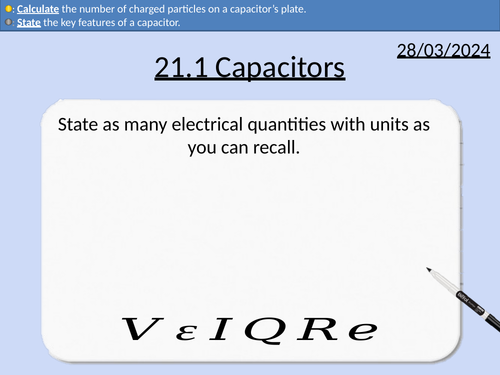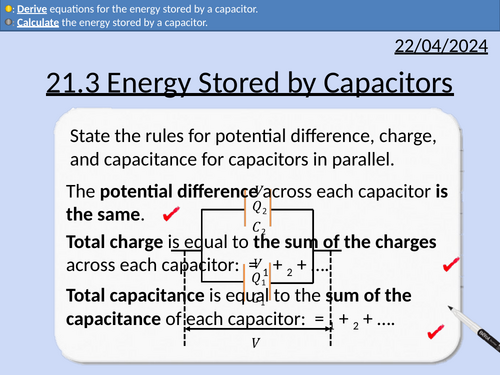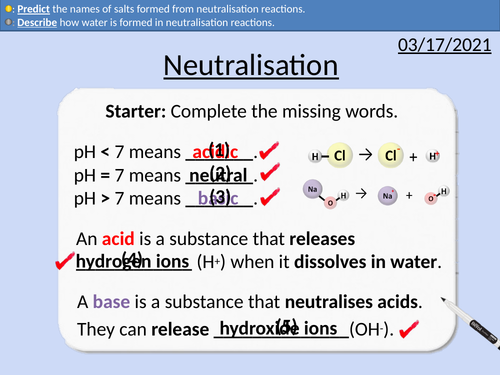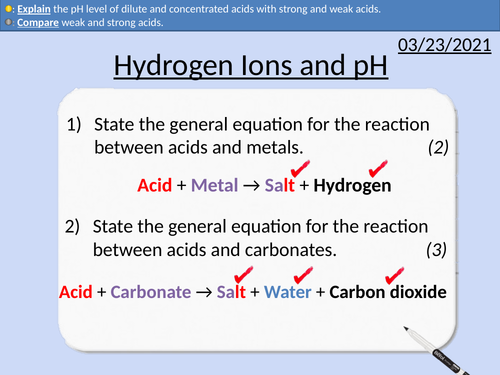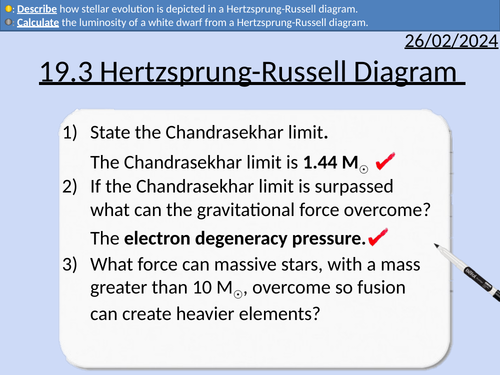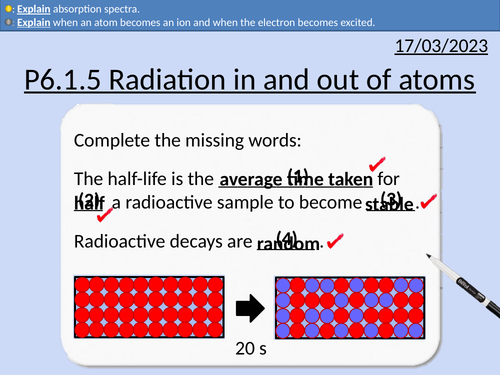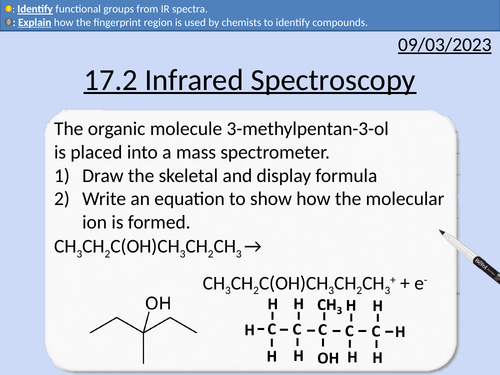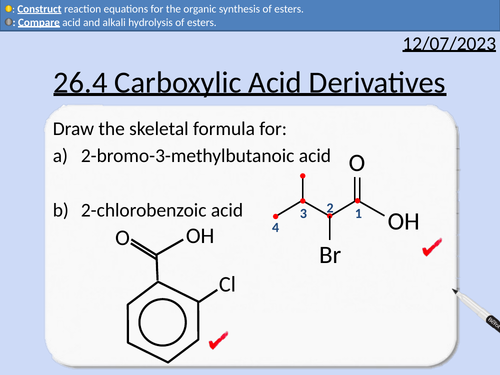442Uploads
133k+Views
61k+Downloads
All resources
Bundle

OCR AS level Physics: Laws of Motion
OCR AS level Physics presentations for module 3: Materials.
All presentations come with worked examples, solutions and homeworks.
This covers topics from Newton’s laws to conservation of momentum in two dimensions.
Bundle

OCR AS level Physics: Waves 2
OCR AS level Physics presentations for module 4: Waves 2
All presentations come with worked examples, solutions and homeworks.
This covers topics from Superposition of Waves to Harmonics with different boundary conditions.

GCSE Physics: Series and Parallel Circuits
This presentation covers OCR Gateway Physics 9-1 P3.2.2 Series and Parallel Circuits
Rule for current in series and parallel circuits
Rule for potential difference in series and parallel circuits.
Working scientifically
Student activities with worked solutions
Exam questions with worked solutions
Bundle

OCR AS level Physics: Waves 1
OCR AS level Physics presentations for module 4: Waves 1
All presentations come with worked examples, solutions and homeworks.
This covers topics from wave properties to Snell’s law and total internal reflection.
Bundle

OCR AS level Physics: Quantum Physics
OCR AS level Physics presentations for module 4: Quantum Physics.
All presentations are full lesson PowerPoints with worked examples and homeworks with complete worked answers.
The Photon Model
Energy of a single photon
Converting from electron-volts to Joules.
Frequency of the electromagnetic spectrum
Determining Plank’s constant with LEDs
Threshold potential difference difference
Photoelectric Effect
Threshold frequency
Producing photoelectrons
Kinetic energy of photoelectrons
Linking frequency and wavelength
The electromagnetic spectrum, frequency and energy.
Einstein’s Photoelectric Equation
The photoelectric equation
Work function and Kinetic Energy
Determining work function from a graph
Determining threshold frequency from a from graphical analysis.
Determining Plank’s constant from graphical analysis.
Wave Particle Duality
deBroglie wavelength equation
Diffraction of electrons and protons
Comparing wavelengths of particles with different masses
Kinetic energy and wavelength
Bundle

OCR A level Physics: Circular Motion
OCR A level Physics: Thermal Physics apart of the Module 5: Newtonian World and Astrophysics.
All presentations come with worked examples, solutions and homeworks.

OCR A level Physics: Capacitors
OCR A level Physics: 21.1 Capacitors
Module 6 Particles and Medical Physics
This PowerPoint is a whole lesson included with student activities, animated answers, homework questions with answers provided.
This lesson covers:
Electrical quantities, symbols, and units
SI prefixes and standard form
Definition of a capacitor
Structure of a capacitor
Calculating capacitance, charge, and potential difference.

OCR A level Physics: Energy Stored by Capacitors
OCR A level Physics: 21.3 Energy Stored by Capacitors
Module 6 Particles and Medical Physics
This PowerPoint is a whole lesson included with student activities, animated answers, homework questions with answers provided.
This lesson covers:
Work done of a capacitor depends upon the initial potential difference and capacitance.
Work done is provided by the source of potential difference.
Deriving three equations for work done of a capacitor.
Bundle

OCR AS level Physics: Foundations of Physics
OCR AS level Physics presentations for module 2: Foundations of Physics.
All presentations come with worked examples, solutions and homeworks.
This covers topics from SI units to vector analyis with sine and cosine rules.
Bundle

OCR A level Physics: Ideal Gas
OCR A level Physics: Ideal Gas is a part of the Module 5: Newtonian World and Astrophysics.
All presentations come with worked examples, solutions and homeworks.

GCSE Chemistry: Neutralisation Reactions
This PowerPoint presentation with worked examples and student questions covers:
• Word equations for neutralisation reactions
• Describing how ions form salts
• Describing how water is formed
• Predicting the names of salts formed

GCSE Chemistry: Hydrogen Ions and pH
This PowerPoint presentation with worked examples and student questions covers:
• Concentration of fruit squash
• Comparing strong and weak acids
• pH and hydrogen ion concentration
• Titration curves

OCR A level Physics: Hertzsprung-Russell Diagram
OCR A level Physics: 19.3 Hertzsprung-Russell Diagram
Module 5 Newtonian World and Astrophysics
This PowerPoint is a whole lesson included with student activities, animated answers, homework questions with answers provided.
This lesson covers:
Definition of luminosity
Usual axis choice of a HR diagram.
Identifying the positions of the main sequence, white dwarfs, red giants, and red supergiants.
Description of how stellar evolution is shown in a Hertzsprung-Russell diagram.

OCR AS Physics: Potential Dividers
OCR AS Physics A: Potential Divider is a part of the Module 4: Electrons, Waves, and Photons. PowerPoint with worked examples and homework.
Application of the ratio of resistances
Application of the potential divider circuit
Deriving the potential divider equation
Rearranging the potential divider equation

GCSE Physics: Absorption and Emission Spectra
This presentation covers OCR Gateway Physics 9-1 P6.1.5 Radiation in and out of atoms.
This PowerPoint is a whole lessons included with student activities and animated answers.
Arrangements of electrons and distance from the nucleus
Electron energy levels
Absorbing electromagnetic radiation
Electromagnetic radiation and energy
Absorption spectra
Emission spectra
Discovery of helium
Bundle

OCR A level Physics: Oscillations and Simple Harmonic Motion
OCR A level Physics: Oscillations and Simple Harmonic Motion is a part of the Module 5: Newtonian World and Astrophysics.
All presentations come with worked examples, solutions and homeworks.

OCR AS Chemistry: 17.2 Infrared Spectroscopy
OCR AS Chemistry: 17.2 Infrared Spectroscopy
This PowerPoint is a whole lessons included with student activities, animated answers, homework questions with answers provided.
This lesson covers:
Absorb infrared radiation increasing vibrations
What determines the magnitude of vibration
Fingerprint region
Identifying peaks

A level Chemistry: Carboxylic Acid Derivatives
OCR A level Chemistry: 26.3 Carboxylic Acids
This PowerPoint is a whole lesson included with student activities, animated answers, homework questions with answers provided.
This lesson covers:
Naming acyl chlorides
Naming acid anhydrides
Naming esters
Esterification
Acid hydrolysis of esters
Alkali hydrolysis of esters
Producing acyl chlorides from carboxylic acids
Producing carboxylic acids from acyl chlorides
Producing esters from acyl chlorides and phenols
Primary, secondary, and tertiary molecules
Producing primary amides from acyl chlorides
Producing secondary amides with acyl chlorides
Producing esters and carboxylic acids wirh acid anhydride
Bundle

OCR A level Physics: Stars
OCR A level Physics: Chapter 19 Stars is apart of the Module 5: Newtonian world and Astrophysics.
All presentations come with worked examples, solutions and homeworks.
19.1 Objects in the Universe
19.2 Life Cycles of Stars
19.3 Hertzsprung-Russell Diagram
19.4 Energy Levels in Atoms
19.5 Spectra
19.6 Analysing Starlight
19.7 Stellar Luminosity
The size of astronomical objects: Universe, Galaxies, Solar systems, Stars, Planets, Planetary satellites, Comets, Artificial planetary satellites
Comparing planets and comets
The birth of stars
Stars in equilibrium during the main sequence
Calculating mass in kg from solar mass
Life cycle of stars with a mass between 0.5 and 10 solar masses
Life cycle of stars with a mass above 10 solar masses
Pauli exclusion principle and electron degeneracy pressure
Red giants and white dwarfs
The Chandrasekhar limit
Red supergiants to black holes and neutron stars
Stellar nucleosynthesis
Definition of luminosity
Usual axis choice of a HR diagram.
Identifying the positions of the main sequence, white dwarfs, red giants, and red supergiants.
Description of how stellar evolution is shown in a Hertzsprung-Russell diagram
Atoms have different electron arrangements
Ground state energy
Bound electron states being negative
Converting between joules and electronvolts
Calculating the change of energy between energy states
Calculating a photon’s frequency and wavelength
The electromagnetic spectrum and wavelengths
Definition of spectroscopy
Electrons and energy levels
Continuous spectra
Emission spectra from gases
Absorption spectra from gases
Electromagnetic interference
Double slit experiment
Path and phase difference
Diffraction grating
The grating equation
Lines per millimeter to grating spacing
Maximum order, n
Maximum number of maxima
The electromagnetic spectrum, frequency/wavelength, and temperature
Black body radiation
Wein’s displacements law
Stefan’s law (Stefan-Boltzmann law)
Bundle

OCR A level Physics: Cosmology (Big Bang)
OCR A level Physics: Chapter 20 Cosmology (Big Bang) is apart of the Module 5: Newtonian world and Astrophysics.
All presentations come with worked examples, solutions and homeworks.
20.1 Astronomical Distances
20.2 The Doppler Effect
20.3 Hubble’s Law
20.4 The Big-bang Theory
20.5 Evolution of the Universe
Astronomical distances: light-years, parsec, astronomical unit
Astronomical angles - degree, arcminute, arcsecond
Parallax Angle
The definition of the Doppler effect
Changes in pitch of sound waves due to relative motion
Absorption spectra and electron energy levels
Red-shift and blue-shift absorption spectra
The Doppler equation
The condition for velocity for the Doppler equation
The Cosmological Principle
Hubble’s Observations
Hubble’s Law
Hubble’s constant and the gradient of a graph
Converting between km s-1 Mpc-1 into s-1
The expanding Universe model.
Georges Lemaître’s Theory
Evidence for the Big Bang Model
Hubble’s Law (expanding Universe)
Microwave Background Radiation
Source of the Microwave Background Radiation
Hubble’s constant and the age of the Universe
The evolution of the Universe from the Big-bang to 13.7 billion years later
The composition of the Universe
Experimental evidence for dark matter
Experimental evidence for dark energy







